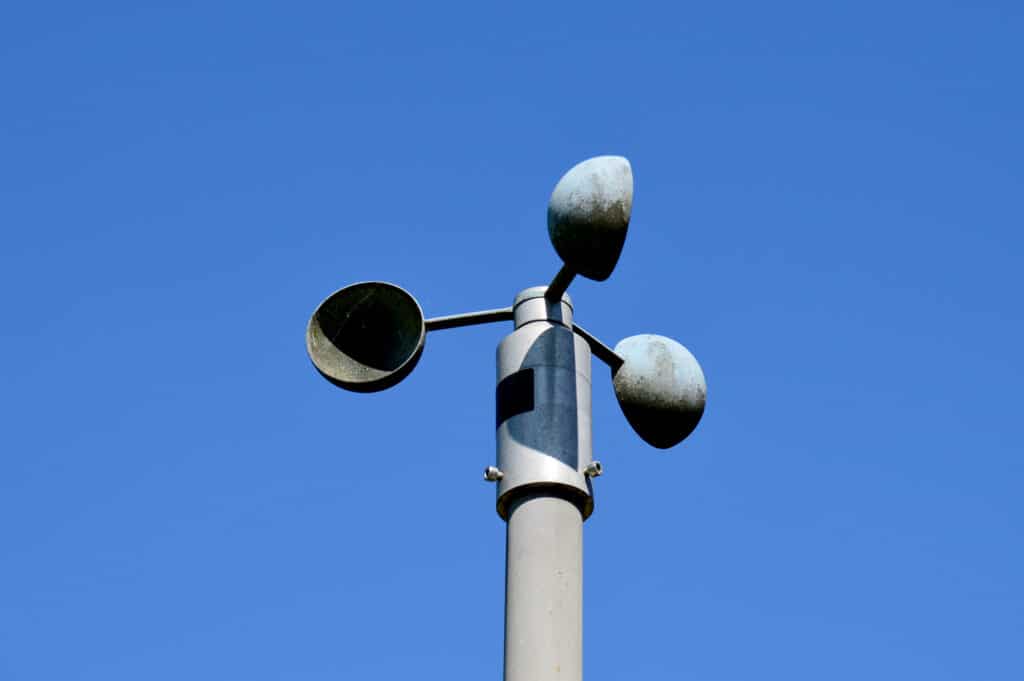Anemometers Unveiled: Understanding Their Importance in Environmental Tracking and Precaution
The function of anemometers in environmental monitoring and safety steps is commonly undervalued, yet their relevance is indisputable. These instruments have a long history rooted in clinical questions and technical developments, progressing to end up being necessary tools in different fields. From weather forecasting to aeronautics security, anemometers play a vital function in offering accurate information that notifies decision-making processes and boosts general safety. Understanding the details of anemometers reveals a world of crucial understandings that are essential to our understanding of the environment and the measures we require to guarantee safety.
Background of Anemometers
The development of anemometers can be mapped back to the ancient people where basic wind gauging devices were initial utilized. These very early wind measurement devices laid the structure for the advancement of more innovative anemometers over time. One of the earliest recognized anemometers was the hemispherical mug anemometer designed by Leon Battista Alberti in the 15th century. This design included four hemispherical mugs that gathered wind energy, supplying a measurement of its intensity based on the speed of turning.
In the 18th century, the renowned scientist John Thomas Romney Robinson introduced the Robinson anemometer, which included 4 hemispherical mugs placed on straight arms that extended from a central axis. This style ended up being a criterion in atmospheric dimensions due to its accuracy and reliability. Throughout the years, improvements in modern technology led to the development of more contemporary anemometers, including ultrasonic anemometers and laser Doppler anemometers, providing boosted accuracy and performance in gauging wind rate and instructions. The background of anemometers showcases a remarkable trip of innovation and progress in the field of meteorology.
Types of Anemometers
Throughout the field of weather forecasting, various types of anemometers have been created to precisely determine wind speed and instructions. The most common kind is the mug anemometer, which is composed of 3 or 4 cups placed on straight arms that rotate with the wind. As the mugs rotate, the speed at which they revolve is straight proportional to the wind rate. One more widely made use of type is the vane anemometer, which includes a tail or fin that straightens itself with the wind direction. This placement allows the tool to figure out the wind direction. Sonic anemometers make use of ultrasonic signals to determine wind rate and direction accurately. They are generally utilized in research applications because of their high precision. Hot-wire anemometers run based on the principle that the cooling result of wind on a heated cord is proportional to the wind rate. These anemometers are appropriate for gauging reduced wind rates with high accuracy. Each type of anemometer has its toughness and is picked based on the specific demands of the monitoring task at hand.
Applications in Meteorology
Having gone over the various sorts of anemometers made use of in meteorology for gauging wind rate and direction, it is vital to discover their practical applications in the area. Anemometers play a crucial function in meteorology by offering real-time and precise data on wind conditions (anemometer). Meteorologists make use of anemometers to check wind speed and instructions to anticipate weather condition patterns, issue cautions for extreme weather occasions like hurricanes, tornados, and tornadoes, and evaluate weather for aviation security
In meteorology, anemometers aid in understanding regional and local wind patterns, which are vital for anticipating weather modifications and determining weather fads. These devices are additionally used in research study to study microclimates, urban heat islands, and air contamination dispersion. Furthermore, anemometers are used in farming to maximize crop administration methods, such as irrigation and try here pesticide application, based on wind problems.
Value in Aviation Safety
An integral facet of making certain aviation safety and security depends on the meticulous monitoring of wind conditions utilizing anemometers. Anemometers play a crucial duty in aeronautics by giving real-time information on wind rate and direction, assisting pilots in making educated choices during flight, touchdown, and take-off. Strong and unpredictable winds can significantly impact airplane procedures, making it essential for air travel authorities to count on exact wind dimensions to guarantee the safety and security of passengers and crew.

In the dynamic environment of aeronautics, where also minor adjustments in wind speed and direction can have profound impacts, anemometers stand as vital tools for promoting safe and safe flight.
Duty in Environmental Study
Anemometers play an essential duty in environmental study by giving important information on wind speed and direction. By precisely gauging read here wind attributes, anemometers assist scientists evaluate the activity of toxins in the air, analyze the influence of commercial discharges, and predict the spread of impurities in the atmosphere.


Verdict
To conclude, anemometers have actually played an important function in environmental monitoring and precaution. With a rich history and different types available, these tools have actually been extensively used in meteorology, aviation safety, and ecological study. Understanding the significance of anemometers is important for precisely measuring wind speed and instructions, which is important for forecasting weather condition patterns, guaranteeing safe aeronautics procedures, and carrying out environmental studies - anemometer. Their contributions to these areas can not be taken too lightly.
One of the earliest known anemometers was the hemispherical cup anemometer invented by Leon Battista Alberti in the 15th century. Over the years, advancements in innovation led to the growth of more contemporary anemometers, including ultrasonic anemometers and laser Doppler anemometers, supplying boosted accuracy and effectiveness in determining wind speed and instructions. Hot-wire anemometers operate based on the concept that the cooling impact of wind on a warmed cable is proportional to the wind speed. Meteorologists utilize anemometers to check wind rate and direction to forecast weather patterns, problem warnings for severe weather occasions like tornadoes, hurricanes, and tornados, and examine climatic conditions for aviation safety.
Comprehending the relevance of anemometers is important for properly determining wind rate and direction, which is important for predicting weather condition patterns, making sure safe aeronautics procedures, and conducting ecological research studies. (anemometer)